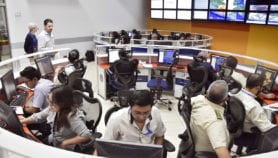By: Athar Osama
Send to a friend
The details you provide on this page will not be used to send unsolicited email, and will not be sold to a 3rd party. See privacy policy.
Athar Osama argues that despite big new initiatives, ICT’s reputation as a major driver of development is so far undeserved.
The information and communication technology (ICT) ‘revolution’ has been hailed as the enabling force for developing countries to become more active participants in the global economy. Institutions like the United Nations and World Bank support the creation and funding of ICT strategies to help such countries leapfrog stages of economic development.
But developing countries must first solve tough, often unglamorous, problems like illiteracy, social mobility, government inefficiency and corruption, and a lack of economic opportunities if they are to realise the potential of ICT for development.
A new paradigm?
Some initial success stories in using technology to empower large masses of people have been seen as early and unqualified proof of the success of ICT as a new development paradigm for the South.
In Bangladesh, for instance, the accomplishments of Grameen Bank — and subsequently Grameen Telephone — created hope among government leaders, development planners and civil society groups across much of Asia and Africa.
The Massachusetts Institute of Technology’s One Laptop Per Child initiative to develop a US$100 laptop has also been widely touted as heralding a revolution in the way we teach our children in the future.
In many ways, India has been the poster child for ICT for development enthusiasts since the early 1990s. In 1998, the Indian government set targets for the country’s software exports at US$50 billion by 2008, and made 45 recommendations on the direct use of information technology to achieve development and literacy objectives.
This policy focus has unleashed a flurry of activity, with one observer estimating that there are currently over 50 grassroots projects using ICT in the service of India’s downtrodden poor.
For example, Drishtee — a project funded by McKinsey Ventures — has set up over 25 Internet kiosks around the state of Haryana to automate government services like land transfer and pensions.
Rural e-Seva operates around 150 online information kiosks and rural service delivery points across Andhra Pradesh that provide weather and market information as well as medical and agricultural advice. People can also use the kiosks to pick up land records or pay bills.
Funded and supported by the Indian Tobacco Company, e-Choupal places computers with Internet access in rural farming villages, aiming to establish an agricultural marketplace for India’s poor, where they can order products, track global price trends and find information about new farming techniques. Around 2,700 e-Choupals have been created so far across five Indian states, with plans for 22,000 more. The company claims to have made over US$100 million of agricultural transactions.
Beyond the myths
The real progress of ICT in development has been quite different from the hope and hype. There is much wishful thinking about the initiatives in India and elsewhere. In fact, there has been scant sharing of information or best practices across projects, and a negligible impact on the lives of ordinary people.
On top of this is the lack of a systematic and rigorous analysis of just how efficient the projects are. One exception is a study by the Indian Institutes of Information Technology in Bangalore. Its analysis of six prominent programmes in India disprove several of the myths of ICT for development.
The study shows, for example, that most projects have had little or no direct impact on poverty. Their ability to generate income has been limited, ranging from just over a dollar a day for Drishtee kiosk operators to slightly more than two dollars a day for e-Seva operators. The e-Choupals seem to be an exception, but have not yet been rigorously examined.
The study also indicates that most projects are not sustainable. Revenues from Drishtee kiosks, for example, are in decline.
Many projects have also failed to use kiosks to deliver critical information to local communities. Instead, they often derive the bulk of their utility and revenues as computer and photocopying shops or cyber cafes.
Many of the e-government projects surveyed have had limited impact on the quality of service delivery. In most instances they depend on high-profile champions whose involvement and patronage enhances the quality of services for a short time. Eventually, though, they return to their usual inefficiency, corruption and patronage.
Pinning down what works
Even if these projects were deemed successful by some measure, it is likely that their achievements would be diluted if replicated beyond the pilot stages. For instance, for the Drishtee project to expand across India alone, it must be replicated 10,000 times over.
More importantly, though, these results highlight the importance of seeking social, political and economic solutions to the social, political and economic problems of the world. Technology may be a facilitator but it cannot improve the efficiency of government, or deliver critical information if there is no consensus to do so in the first place.
There is clearly a need for closer examination of the promise and potential, success and failure, and challenges and bottlenecks of ICT in promoting real and sustainable development across the developing world.
Athar Osama is a senior executive at ANGLE Technology Group in the United States and specialises in technology-based economic development.













